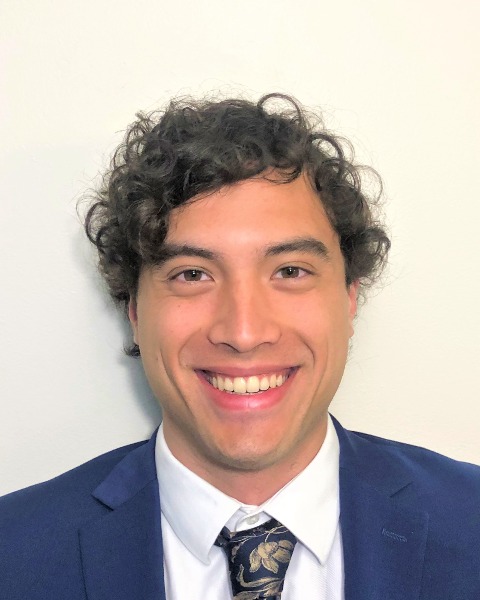Hospital Medicine: Newborn Care
Category: Abstract Submission
Hospital Medicine: Clinical - Bronchiolitis/HFNC and Newborn Care
123 - Cost Effectiveness of Palivizumab Administration in Premature Infants
Monday, April 25, 2022
3:30 PM - 6:00 PM US MT
Poster Number: 123
Publication Number: 123.415
Publication Number: 123.415
Robert Dembinski, University of Pittsburgh School of Medicine, Pittsburgh, PA, United States; Kenneth J. Smith, University of Pittsburgh, PITTSBURGH, PA, United States; Judith M. Martin, University of Pittsburgh, Pittsburgh, PA, United States; Anne-Marie Rick, University of Pittsburgh School of Medicine, Pittsburgh, PA, United States

Robert Dembinski
Student
University of Pittsburgh School of Medicine
Pittsburgh, Pennsylvania, United States
Presenting Author(s)
Background: Palivizumab (Synagis) is a monoclonal antibody used to prevent serious lung disease caused by respiratory syncytial virus (RSV) in high-risk children. The American Academy of Pediatrics (AAP) recommends prophylactic Palivizumab for infants born before 29 weeks gestational age (GA), infants with chronic lung disease (CLD), and infants with hemodynamically significant congenital heart disease (HS-CHD).
Objective: To determine if administration of prophylactic monthly Palivizumab is a cost-effective method of reducing hospitalization and recurrent wheezing in infants born between 29-32 weeks GA with CLD or HS-CHD.
Design/Methods: Modeling was performed using TreeAge Pro Healthcare. Cost data for diagnoses were obtained through HCUPnet, a database maintained by the Agency for Healthcare Research and Quality. Drug costs were from the Federal Supply Service. Palivizumab is purchased in 100mg or 50mg vials with a recommended dosing of 15mg/kg. Average cost of Palivizumab was calculated using the 50th percentile for weight on Fenton growth curves. We assumed infants would receive an average of 3.5 doses of Palivizumab over a single respiratory season. Relevant clinical outcomes were selected as payoffs: hospitalization, recurrent wheezing. 1-way sensitivity analyses yielded incremental cost-effectiveness ratios (ICERs) to determine cost per event avoided. A literature review was conducted to obtain national rates of hospitalization and wheezing for our population and run through our cost-effectiveness model (Figure 1).
Results: Conservative average economic evaluation of each variable resulted in the following costs: Palivizumab - $9,557, Hospitalization - $39,354, Wheezing – $15,500. Similarly, Palivizumab was assumed to reduce hospitalization by 45%. From the hospital cost perspective, the cost per hospitalization avoided with Palivizumab was $125,000 for infants born between 29-32 weeks GA with CLD or HS-CHD. Additionally, the cost per recurrent wheezing avoided with Palivizumab was $58,000. Conclusion(s): The incremental benefit of prophylactic Palivizumab was more costly than both cost of hospitalization and cost of wheezing. However, the adjusted quality-adjusted life-year resulting from Palivizumab administration and its reduction of recurrent wheezing and hospitalization should be considered. Worthwhile treatments generally cost < $50,000/QALY gained. Since conservative estimates were used for this national analysis, it is likely that palivizumab is more economically favorable than our analysis suggests.
Dembinski_CV.pdf
Objective: To determine if administration of prophylactic monthly Palivizumab is a cost-effective method of reducing hospitalization and recurrent wheezing in infants born between 29-32 weeks GA with CLD or HS-CHD.
Design/Methods: Modeling was performed using TreeAge Pro Healthcare. Cost data for diagnoses were obtained through HCUPnet, a database maintained by the Agency for Healthcare Research and Quality. Drug costs were from the Federal Supply Service. Palivizumab is purchased in 100mg or 50mg vials with a recommended dosing of 15mg/kg. Average cost of Palivizumab was calculated using the 50th percentile for weight on Fenton growth curves. We assumed infants would receive an average of 3.5 doses of Palivizumab over a single respiratory season. Relevant clinical outcomes were selected as payoffs: hospitalization, recurrent wheezing. 1-way sensitivity analyses yielded incremental cost-effectiveness ratios (ICERs) to determine cost per event avoided. A literature review was conducted to obtain national rates of hospitalization and wheezing for our population and run through our cost-effectiveness model (Figure 1).
Results: Conservative average economic evaluation of each variable resulted in the following costs: Palivizumab - $9,557, Hospitalization - $39,354, Wheezing – $15,500. Similarly, Palivizumab was assumed to reduce hospitalization by 45%. From the hospital cost perspective, the cost per hospitalization avoided with Palivizumab was $125,000 for infants born between 29-32 weeks GA with CLD or HS-CHD. Additionally, the cost per recurrent wheezing avoided with Palivizumab was $58,000. Conclusion(s): The incremental benefit of prophylactic Palivizumab was more costly than both cost of hospitalization and cost of wheezing. However, the adjusted quality-adjusted life-year resulting from Palivizumab administration and its reduction of recurrent wheezing and hospitalization should be considered. Worthwhile treatments generally cost < $50,000/QALY gained. Since conservative estimates were used for this national analysis, it is likely that palivizumab is more economically favorable than our analysis suggests.
Dembinski_CV.pdf
